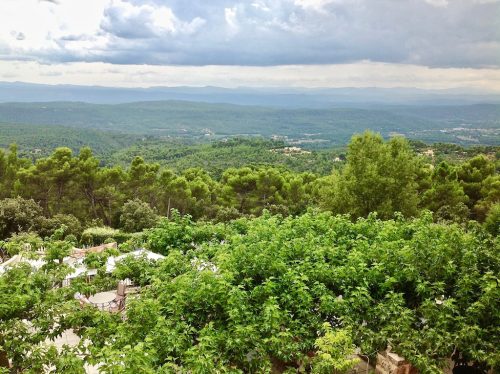BY CHERYL ANDERSON
Tourtour is indeed a “village in the sky.” It’s a member of Les Plus Beaux Villages de France association and has one star in the Michelin Green Guide. From the esplanade, one can see in the east the town of Fréjus and to the west, Montaigne Sainte-Victoire (a favorite subject of the artist Paul Cézanne). It is a commune in the Var department of the Provence-Alpes-Côte d’Azur region.

Green as far as one can see.
The quiet of the village of Tourtour is welcoming. It’s situated off of the main roads, surrounded by grasslands and meadows, and at an altitude of 375-904 meters one is afforded striking panoramic views and the joy visiting an authentic medieval Provençal village.
Little has changed in the village since the Middle Ages. The entire town evokes medieval times. Façades have been restored, juxtaposed next to ancient stonework—remains from the 12th century are still present. In the 17th century, the village developed around a square with a terraced garden, old Provençal houses, and vaulted passages. Wandering through the village, you’re transported to a different time in history.
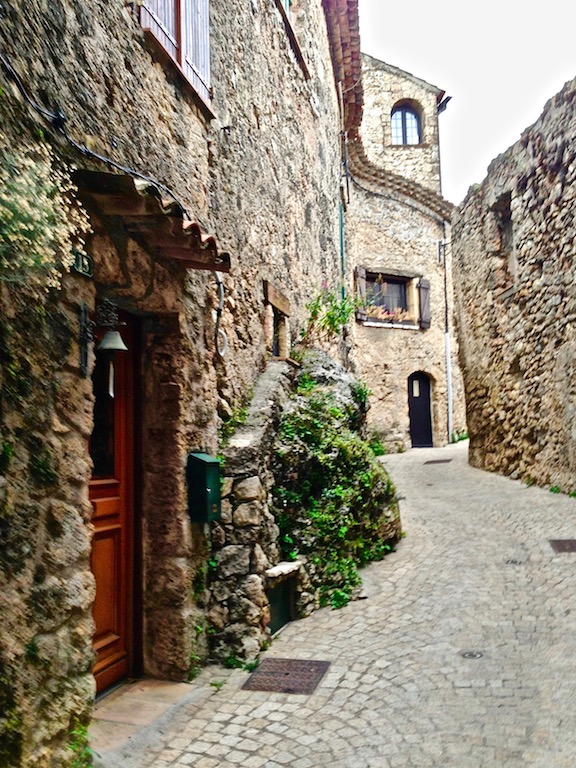
Passageways dating back to the Middle Ages.

Green Door in Tourtour by Cheryl Anderson.
Three ramparts are still visible, the views from them truly breathtaking. The oldest one protects the old medieval castle and first houses. At the second, rue des caves, you’ll see 14th– and 17th-century doors, and at the third, a 17th-century wall surrounds le Château Communal and Chapelle Sainte-Trinité. Next to the communal castle are two bronze sculptures by the artist Bernard Buffet with a marvelous vista in the background. Be sure to see le Vieux Château as well.

Le Portalet and one of the village’s eight fountains.
The eight fountains in the village are fed by the St. Rosaire spring, which turns, along with manpower, the millstone of the 17th-century olive mill, still working in the traditional manner. There have been no changes from the practices of their ancestors, grinding the olives between two millstones as before.
The oil cooperative was abandoned and thus became a communal mill. All of the equipment—the hydraulic wheel and crusher tank—had been left. Olive picking begins in early December for up to 2 months, and the mill is open for use on December 15 for one to two months. I read that it is active and open through the winter, but I can’t be sure of that. It was renovated in 1934 and again in 1949. It’s one of the last remaining olive mills in in Provence and is definitely a must-see. During June to September, the mill room is an art gallery open to the public.
There are many different festivals in Tourtour and you can find out about all of them at the Office de Tourisme, including the la Fête de l’oeuf à Pâques (Egg Festival) held over the Easter weekend. With its creatively decorated eggs and displays all around the village, it looks like it would be something amazing to be a part of. I would bet the Christmas Market and Pastoral is equally festive and beautiful. There’s a village festival the first weekend in August where pétanque competitions are held, along with Provençal dancing, exhibitions, and general village fun—like one big block party. The Jeu de Boules is quite a large area, and I wouldn’t be surprised if you could view a game sometime during your visit.
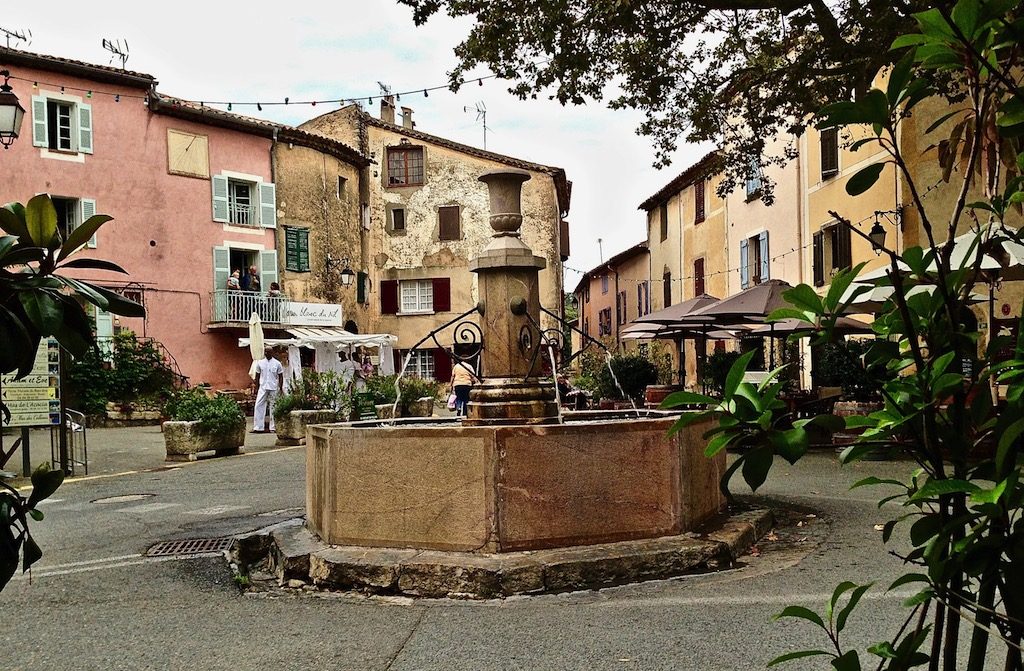
Place des Ormeaux.
Of course, there are village markets, held on Wednesday and Saturday, not to mention book and cultural tours, and many architectural and historical sites to see, including l’Église Saint-Denis, dating back to the 11th century, and two castles with amazing towers. Le lavoir, a long outdoor basin for washing things, is still used by the community. The Provençal Abbey, built in the Romanesque style, was founded by the Cistercian monks in 1146. It sits in the heart of the oak forest. The acoustics are perfect and the light dances among the geometric architecture.
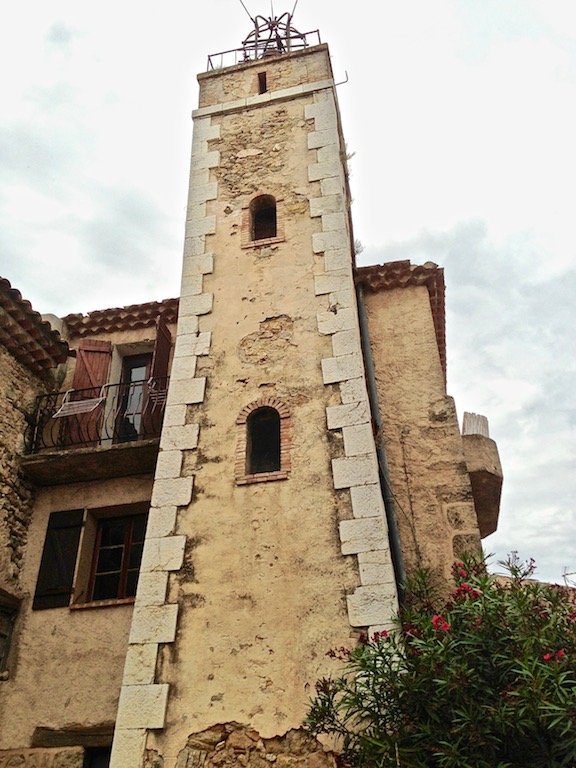
Tour (tower) de l’Horloge.
The natural beauty of the area provides a compelling reason to get outside and explore. It is perfect for hiking or horse rides and even donkeys could accompany you as you make your way through the terrain—a visit to the tourist office will provide any necessary details needed for arrangement.
In the Fossil Museum, most of the specimens, many from the Cretaceous Period, have been found locally, providing an interesting examination of the region’s natural history. Sadly, the two original elms planted in 1638, called Les Ormes de Sully, disappeared in 1990. They were replaced by plane trees. The story of the Duke of Sully and his trees is something you may want to look into. As with many historical facts, there’s some controversy whether or not the two original elms in Tourtour can be attributed to Sully and his project.
Tourtour provides many lodging options to rest your head after days filled with an abundance of natural and manmade wonders. There are gites, hotels, holiday rentals, and bed and breakfasts to choose from. My first visit in 1999 was simply a day trip on the way to other sites. However, in 2013 I stayed at the La Bastide de Tourtour-Hôtel and Spa—a beautiful hotel in the middle of nine acres of pine woodland. At an altitude of 635 meters, there are 180 kilometer’s of panoramic views of three departments, Alpes Maritimes, the Var, and Bouches du Rhône, from the hotel.
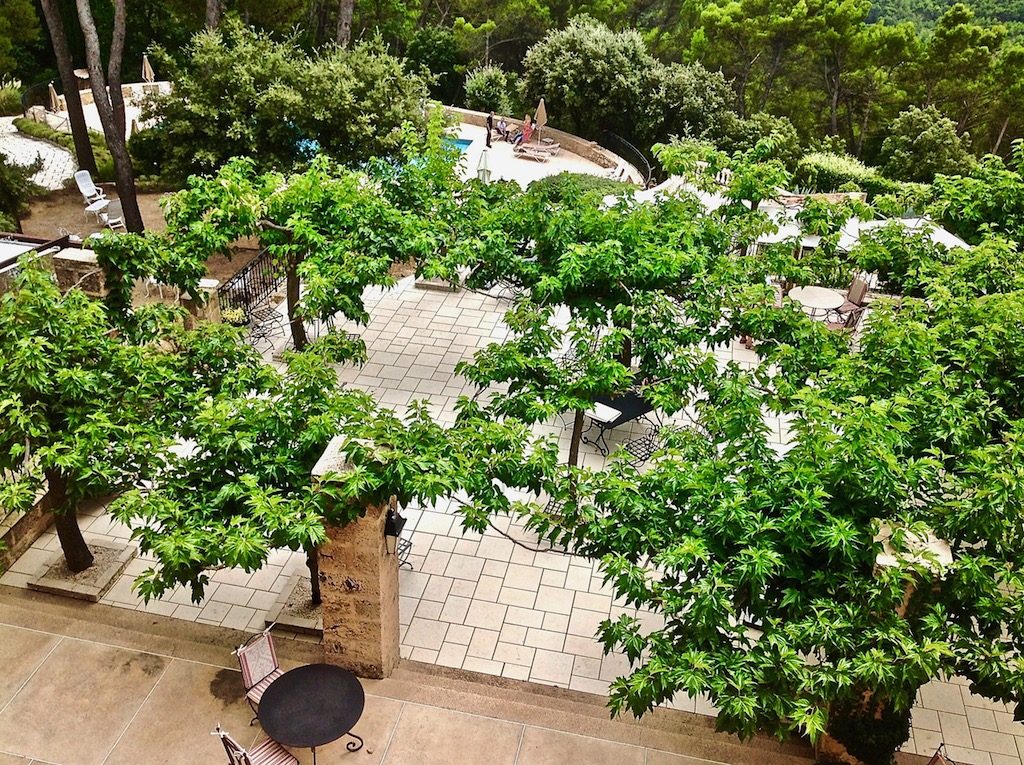
Looking down at the pool and the terrace, La Bastide de Tourtour.
Featured in the 1973 movie Day of the Jackal, the hotel looks the same as it did then. What makes the location so perfect is that there is a paved walkway from the hotel to the village—an easy stroll before dinner for an aperitif or lunch at an outdoor cafe or restaurant. I would say that a stay there for a few days would be a pleasure, allowing you to explore the town, have a swim, or a day at the spa at your leisure. Available to the guests are a tennis court, hot tub, sauna, and hammam. They will accommodate guest requests and recommend activities such as hiking trails and local wineries. The hotel restaurant serves regional cuisine, but there is, of course, a variety of restaurants in the village. Start your day with breakfast in your room or on the beautiful terrace.
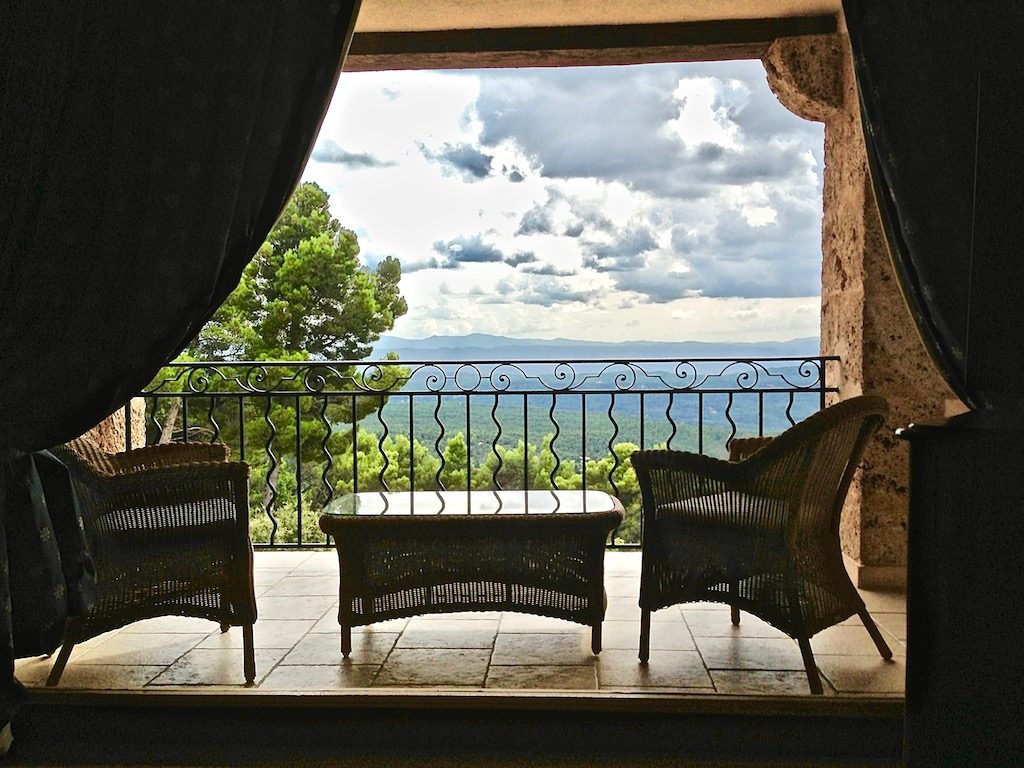
My room with a view across the valley.
Park your car, relax, and enjoy le Village dans le ciel de Provence!
Bonne Vacance!
Fossil Museum
museedesfossiles@free.fr
Office de Tourisme
33 (0) 4 94 70 59



